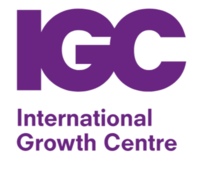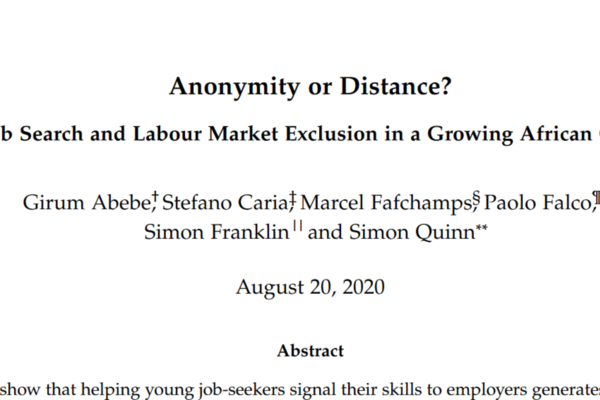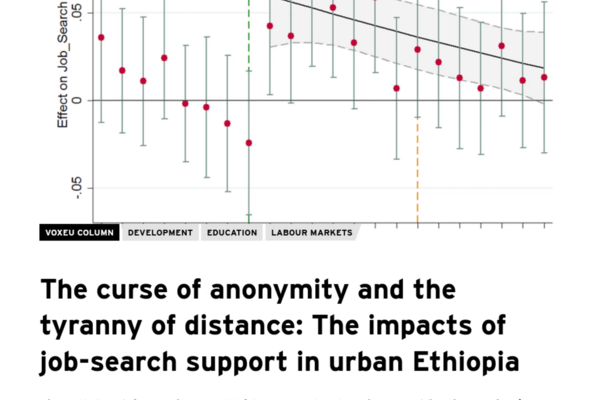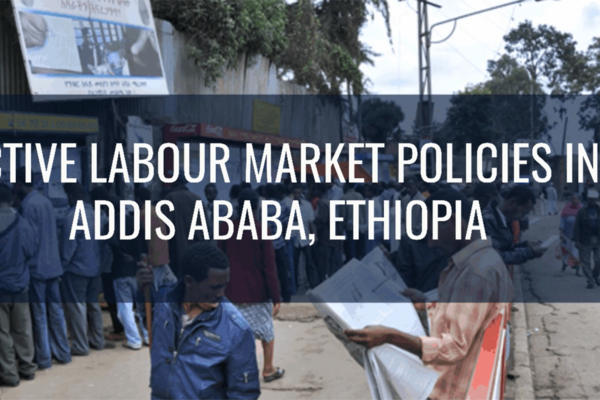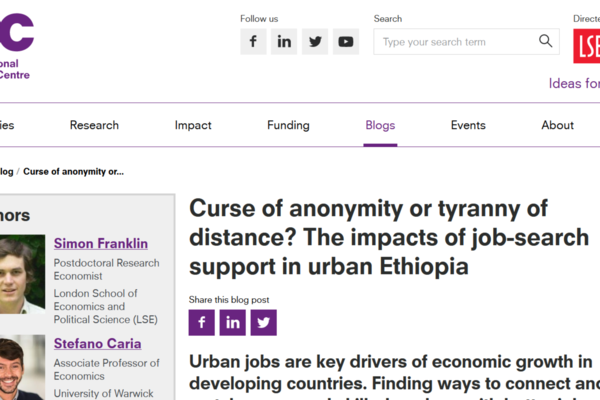ANONYMITY OR DISTANCE: JOB SEARCH AND LABOUR MARKET EXCLUSION IN A GROWING AFRICAN CITY
OUR AIMS
Youth unemployment is a major policy challenge throughout the world and it is especially pressing in urban areas, where high rates of joblessness feed widespread discontent, social tension, and political instability.
This project, in Addis Ababa, Ethiopia, examines what effects two different interventions designed to reduce search frictions for young worker, have on youth unemployment. Do obstacles to job search contribute to labour market exclusion in developing countries?
ABOUT THE PROJECT
This project experimentally evaluates two interventions that are designed to help young urban dwellers search for employment by easing spatial (access to places to search for jobs) and informational (knowledge on how to apply for jobs effectively) constraints to job searching.
- First intervention – Transport study
In the area of this study, people are required to take regular trips to the centre of town in order to search for jobs. In this intervention, participants are given a subsidy to cover the cost of this journey into town to ensure they are all able to access the spaces required to search for jobs. Participants can collect the subsidy from an office located in the centre of the city, up to three times a week, for an average period of 16 weeks.
- Second intervention – Job application workshop
The second intervention is a job application workshop. Participants are offered orientation on how to make effective job applications using CVs and cover letters, and on how to approach job interviews. Further, the research team certify their general skills using a mix of standardised personnel selection tests. The project team worked with a trusted education institute to implement this intervention.
The team also examined a control group that received neither intervention.
Both interventions are specifically geared to help job seekers to find formal and stable work. The researchers use the existing job search system without trying to match firms and workers together directly. The interventions are cheap: the marginal cost of offering the treatment to one individual is about US$19.80 for the transport intervention and US$18.20 for the workshop. The team evaluate these programmes using a large sample of over 3,000 young people (ages 18 to 30) who were without permanent work at the beginning of the study.
The research team randomly assigned some respondents to receive either of the interventions. To understand the mechanisms that drive the effects, the team conducted fortnightly phone interviews with all sampled jobseekers throughout the course of the study. This provides a rich, high-frequency dataset that allows researchers to observe how search behaviour evolves in response to these interventions. The project team then studied the participants labour market outcomes about six months after the intervention finished.
RESULTS
Researchers find large and highly significant impacts of both treatments on job quality (that is, job stability and job formality), and the team find significant impacts on employment and earnings among workers who are most disadvantaged.
Eight months after the end of the programme, individuals invited to the job application workshop are nearly 60% more likely to have permanent employment and 31% more likely to be in formal employment (compared to individuals in the control group). This reduces by more than 20% the gap in permanent employment between youth and older workers. Those who are offered the transport subsidy are 32% more likely to be in formal employment.
The research team also consider how the effects of labour market interventions differ by characteristics of the job-seeker. In this analysis, researchers find the positive effects on job quality are concentrated among groups who typically find it harder to obtain high-quality employment. The team also split the sample by the predicted probability of endline employment. Among those with a low predicted probability of endline employment — that is, a subsample facing the greatest risk of exclusion from the labour market — researchers find large and significant treatment effects on the probability of employment, the probability of formal and of permanent employment, and on total earnings.




